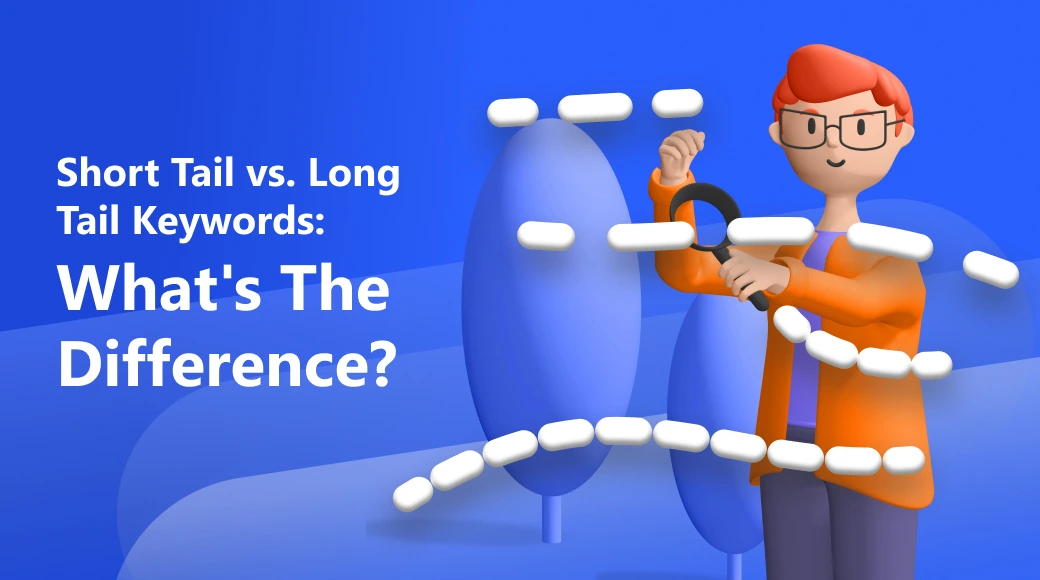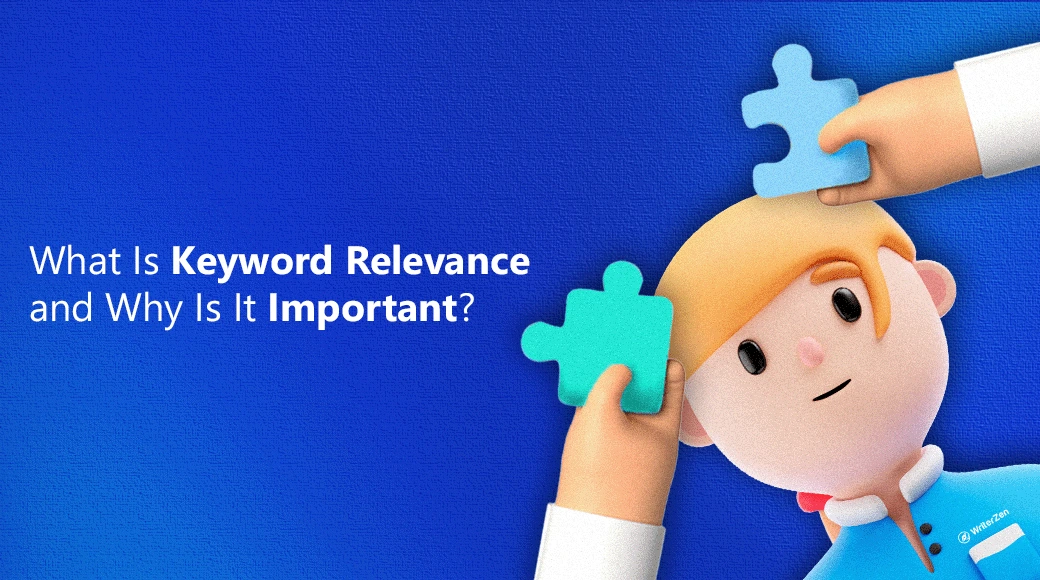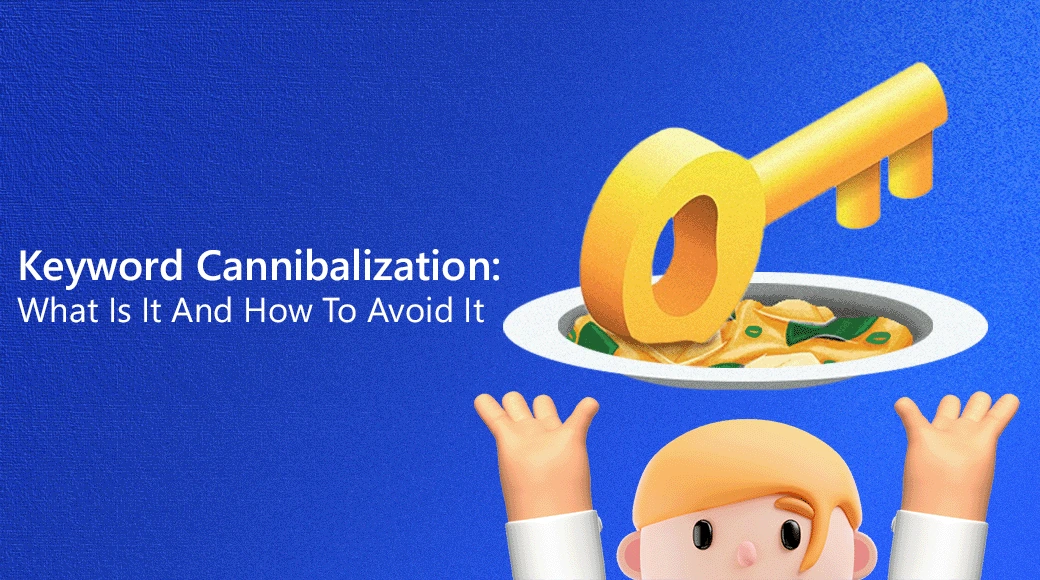Keywords play a crucial part in content marketing SEO strategy.
Carefully and effectively using keywords for an on-page copy will help search engines better find the right customers and users for your website. Keywords also help search engines include your website in a user’s search query.
When keywords are used correctly in an SEO marketing strategy, there’s a good chance that your web page will get a higher Google ranking and get high-quality traffic. Companies and online stores can improve organic website visits with the right keywords.
In this article, you’ll learn about two keyword types; long-tail and short-tail. We’ll delve into the differences between these keywords, the pros and cons, and how you can use them for your keyword research plan to get a higher Google ranking.
What Are Short-Tail Keywords?
Short-tail keywords are also called “head terms.” These keywords are general terms with one to three words and usually cover a broad topic. The short-tail keywords will have a relatively higher search volume than long-tail keywords.
Having a higher search volume means that they will have more online visitors. But just because they attract many visitors doesn’t mean that these are quality keywords.
Short-tail keywords will pop up in a generic online search, which often leads to the search results showing the information they’re not looking for.
With short-tail keywords, there is much higher competition. The increased competition means it’s more difficult to rank with short-tail keywords.
What Are Long-Tail Keywords?
Long-tail keywords are more specific than short-tail keywords. They usually contain three or more keywords. Users will use long-tail keywords when doing voice searches or shopping online.
Typically, long-tail keywords will have a lower search volume rate than short-tail ones, meaning these long-tail keywords are not as popular as short-tail keywords.
It might seem counter-intuitive to use long-tail keywords, but they can be pretty handy if used correctly. Because long-tail keywords are more specific than short-tail keywords, they can give better and more details to online search engines.
So it’s essential to remember that even though long-tail keywords might get your site fewer visits, they get results that are more specific to the user's needs. These more detailed results will mean higher quality traffic is more likely to be converted.
In this example, you’ll find the seed keyword “keto diet” when typed into the search bar; Google Autocomplete Suggestion has come up with many suggestions. The recommendations with bold words are the long tail versions of the head term “keto diet.”

Different Types of Long Tail Keywords
It’s important to remember that not all long-tail keywords are the same. Some long-tail keywords will be for a unique search called “topical long-tail keywords.”
On the other hand, these keywords might just be a less popular version of a popular search. These are referred to as “supporting long-tail keywords.”
If users search each of these keywords in Google, they’ll find that the same pages will have the same top rankings. These rankings happen because Google understands that people will phrase their searches with different keywords when looking for the same thing.
For example, if a person has a top-ranking website with searches for “healthy cat treats,” their page will automatically have a high rank related to long-tail variations. Therefore, they won’t have to build new pages and websites for each long-tail version.
Here, we also need to talk about “parent topics.” Parent topic keywords are advanced keywords that classify different niche services and products in various businesses. Usually, these keywords will generate the highest traffic, and they are the most difficult keywords to rank.
Pros and Cons of Short-Tail Keywords
There is one benefit to using short-tail keywords but are a few things that count against them. To generate traffic to your site, you should use short-tail keywords. The problem is that with new websites, or if users have just started working on generating traffic, they might be starting at the bottom.
Pros of Short-Tail Keywords
Short-tail keywords will always beat long-tail keywords regarding search volume rates, and they have a higher search volume rate than long-tail keywords. If users are looking to generate organic traffic, then they should try getting their pages ranked with short-tail keywords.
Cons of Short Tail Keywords
Plenty of Competition
We already mentioned that short-tail keywords have a high search volume rate, which means plenty of competition in generating a high rank from these keywords.
For example, if you use the word “pizza” to generate traffic, you’ll compete against established websites such as Domino’s, Papa John’s Pizza Hut, etc.
Don’t Have Enough Focus
Another issue with short-tail keywords is that they offer enough focus in online searches and won’t target exactly what you’re looking for in an online search.
For example, if a person uses the keyword “DVD” in their search, they might be looking for a particular DVD, purchasing a DVD, renting DVDs, or a place to copy DVDs. With this keyword, brands such as Sony, Amazon, and Samsung will get high rankings with this keyword.
Expensive to Use
Google Ads will charge you a few pennies to use short-tail keywords, and the high cost is because plenty of other people are buying and using these common search keywords.
Low Conversion Rate
Short-tail keywords have a low conversion rate, especially compared to long-tail keywords. A page might get 10,000 searches and a few hundred clicks, but there will only be one or two customers after conversion.
Even if these customers are regular, you will get a higher conversion rate if you use long-tail keywords.
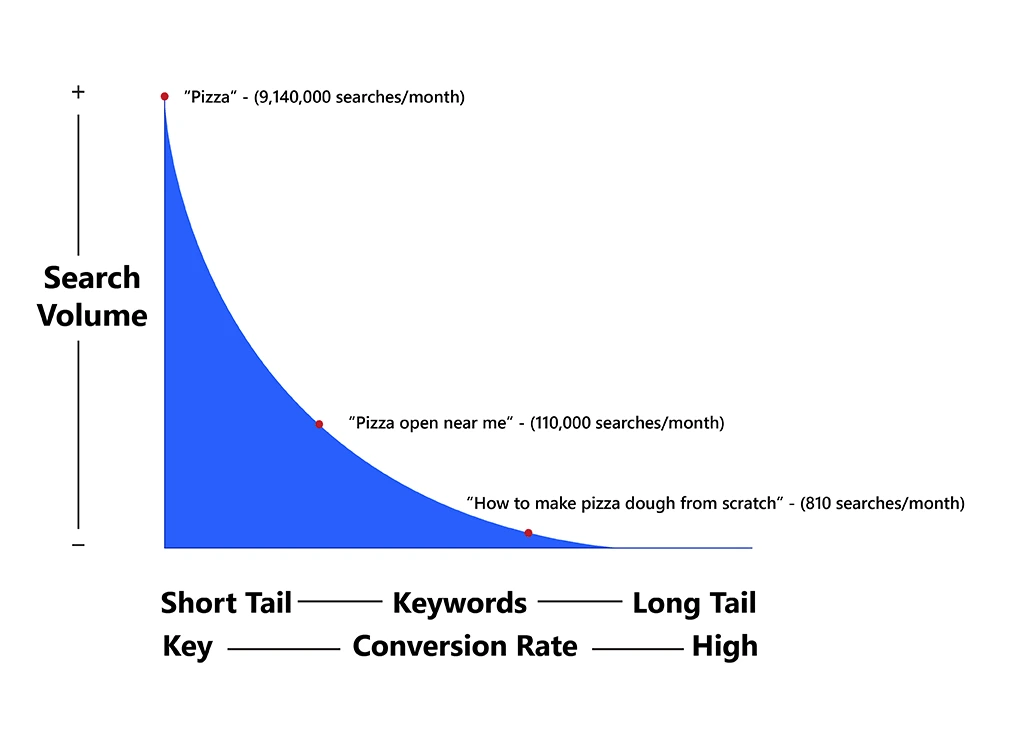
Pros and Cons of Long-Tail Keywords
The long and short of it is that long-tail keywords have more benefits compared to short-tail keywords. If they’re not used correctly, long-tail keywords can stay dormant. However, long-tail keywords are quite effective when they’re used properly.
Pros of Long Tail Keywords
Low Competition
The competition for long-tail keywords is much lower than it is for short-tail keywords. For example, “RV camper power cord hatch cover” and “Pokemon cardholders” will generate particular traffic to different pages. Low competition means that if your page sells these things, there will be few other pages selling these items.
High Focus
Long-tail keywords are highly focused and targeted keywords. Because of their specific nature, pages will get quality traffic for their businesses. Pages will most likely only get visits from customers looking for something specific such as a “small yellow dog raincoat” or “toddler ballet shoes with a pink ribbon.”
Fairly Cheap
A possibly unexpected benefit to using low-traffic long-tail keywords is that they are cheaper than short-tail keywords that generate high traffic. Google Ads charges a reduced rate for searches that contain specific long-tail keywords (three words or more).
With this system, your page might not get as high a rating as you would with a general search, but you still benefit from the low costs.
High Conversion Rates
Lastly, but most importantly, long-tail keywords have a high conversion rate. When people are looking for something specific, it will be easier to find it with long-tail keywords. Because users will find what they need, traffic will likely convert into sales.
The conversion rate will depend on what and where the product or service is being sold. But there is a higher chance of high conversion rates with long-tail keywords.
Cons of Long Tail Keywords
Low Traffic
Sadly, the one drawback with long-tail keywords is that they can generate a low level of traffic, especially compared to the traffic from short-tailed keywords. In some cases, this will be bad for some businesses.
But in other cases, when you’re trying to sell something specific, or you’re trying to target a particular kind of person, then you don’t want traffic from just any kind of person. You don’t want time-wasters cluttering up your online store and getting in the way of genuine customers.
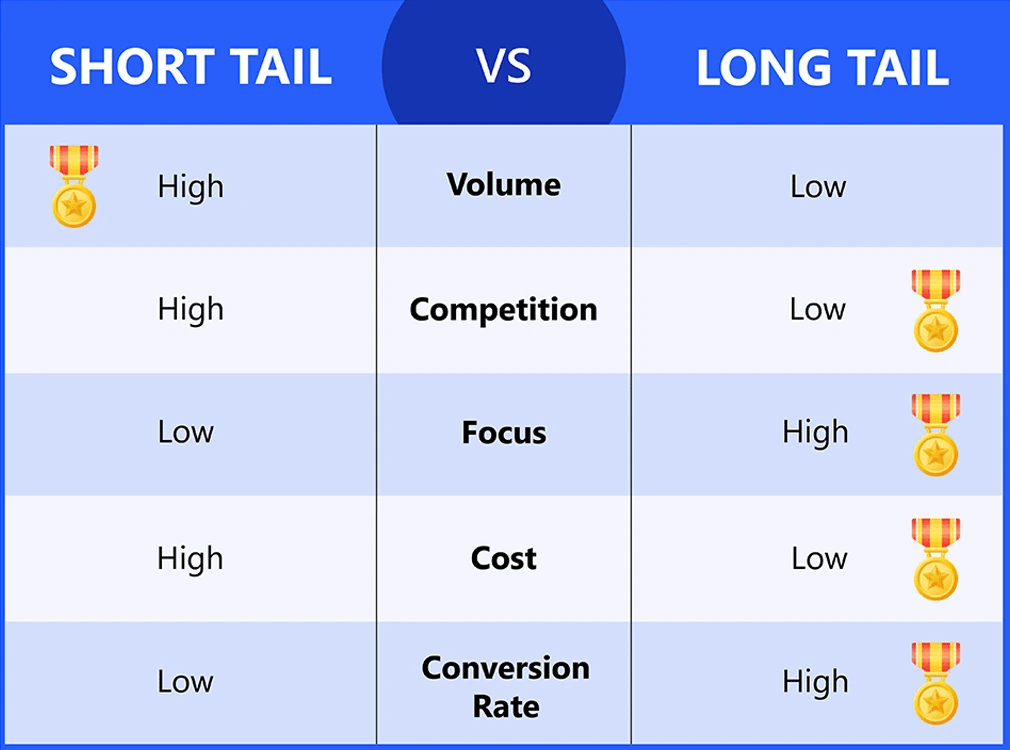
Final Thoughts
After reading this article, you should be clear on how to do SEO keyword research with short-tail keywords and long-tail keywords; at the same time, learn about the difference between these 2 types of keywords. Short-tail keywords have a high search volume rate, leading to plenty of traffic and helping businesses get a ranking for their websites.
Despite the high competition for short-tail being high, they might be worth the investment to optimize your website. But it’s important to remember that you shouldn’t use short-tail keywords alone.
A website is best optimized when both short-tail keywords and long-tail keywords are used together. Long-tail keywords can bring better quality traffic to your website, and better traffic means that there will be a higher conversion rate for the website.
A content plan can succeed with a strategic combination of short-tail and long-tail keywords, so it’s essential to pay close attention to the keyword planning and analysis process.


